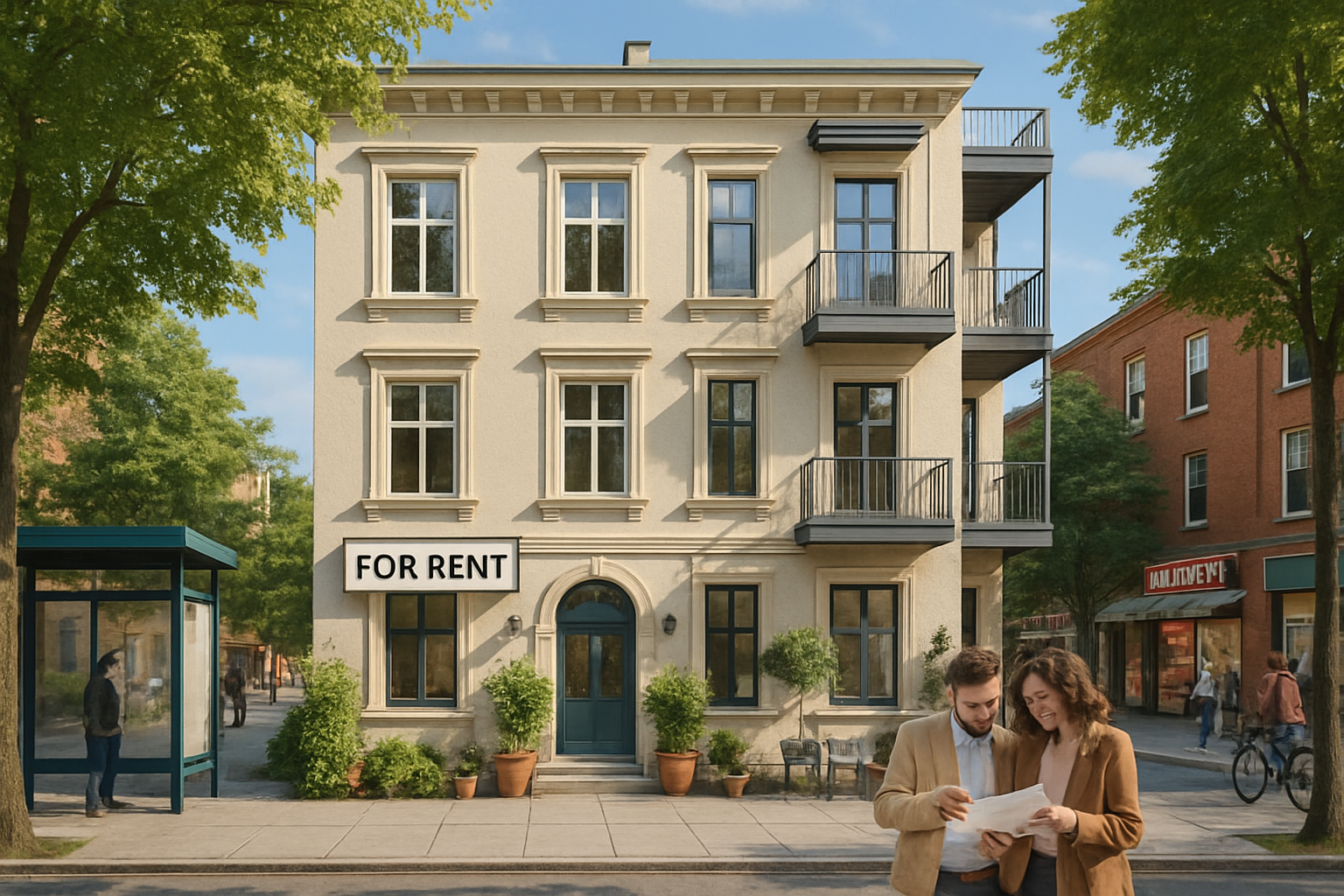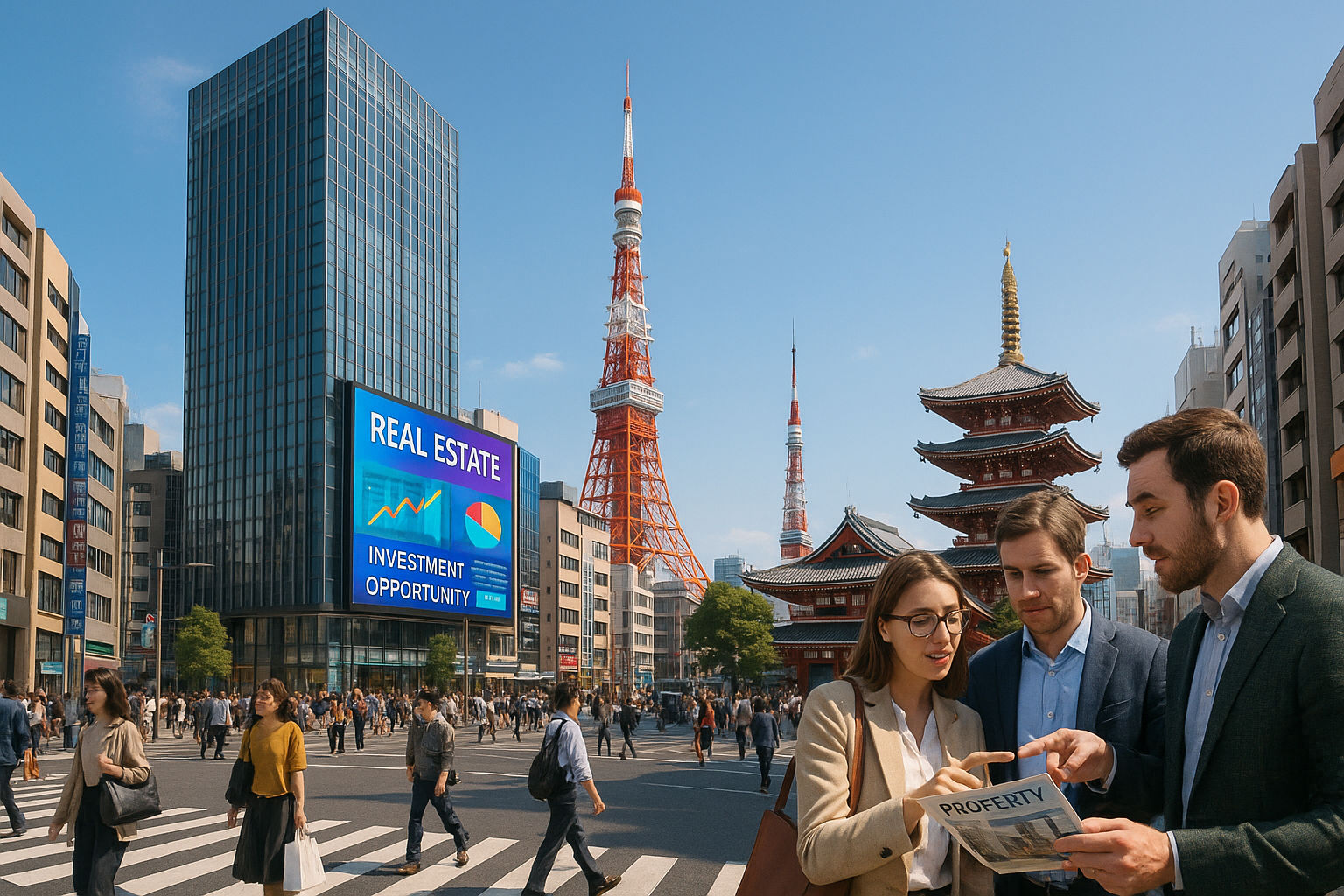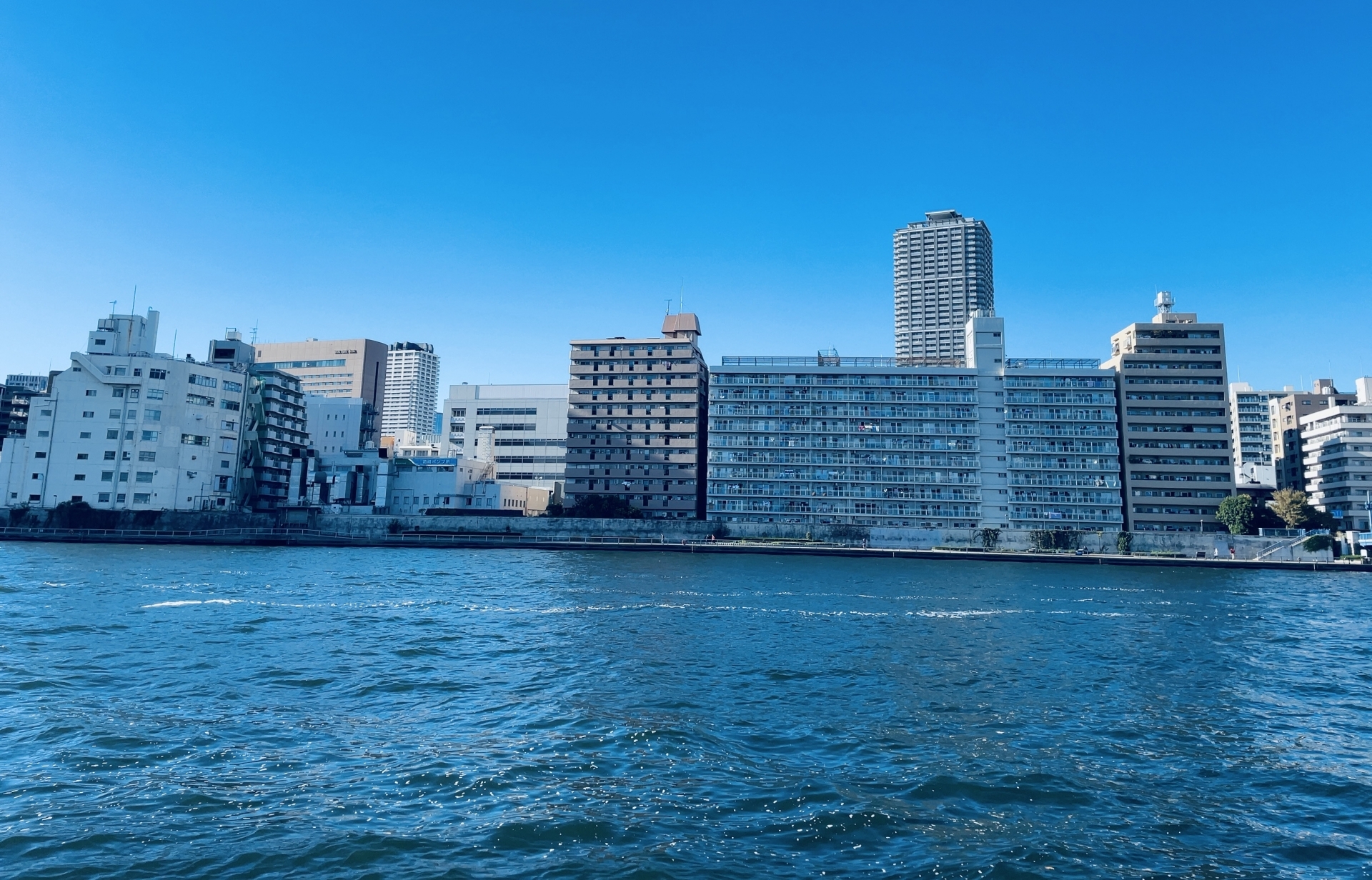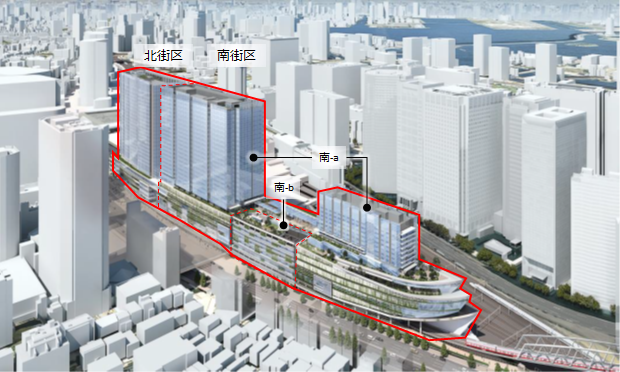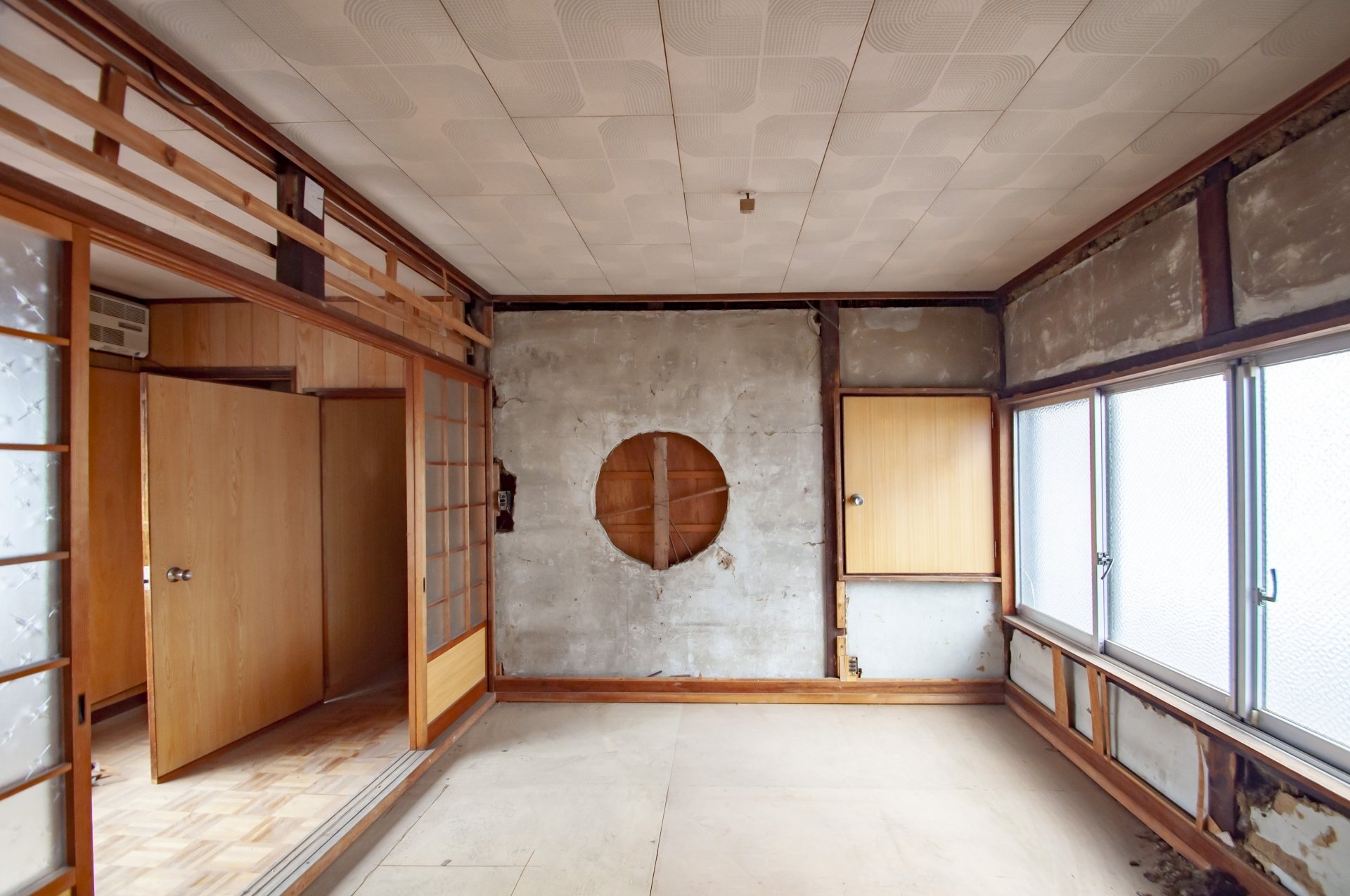For most travelers, the number of stars a hotel has is an important factor in choosing where to stay. There are various grades ranging from one star to five stars, but what criteria are used to evaluate them, and what differences are there in terms of services and facilities? This article provides a clear explanation of the definitions and criteria for hotel grades from one to five stars (differences between domestic and international standards), specific differences in services, facilities, and hospitality, representative hotel chains by grade, average accommodation costs (domestic and international), how to choose a grade based on your purpose, and the impact of hotel grades on cities and regions from a real estate perspective, incorporating business insights.
Definition and criteria of hotel grades (differences between Japan and overseas)
First, let's review the basics of hotel star ratings. Hotel grades are originally rated on a five-point scale from 1 to 5, with more stars generally indicating a higher-class hotel. However, there are no globally unified official standards, and in reality, the criteria vary by country and rating organization.
In Japan, there are no clear national standards, and most hotels use their own criteria or those of external organizations such as major travel agencies, booking sites, or publishers. For example, booking sites like Rakuten Travel and Expedia have different ways of assigning stars and evaluation criteria, so the same hotel may be rated “4 stars” on one site and “5 stars” on another. The situation is similar overseas, with national tourism authorities (e.g., AAA in the United States, the Automobile Association, and the UK Tourism Board) and private rating agencies such as the Michelin Guide and Forbes Travel Guide each assigning stars based on their own criteria. In other words, even when referring to “star-rated hotels,” the criteria vary depending on who conducted the evaluation.
That said, as a general guideline, the higher the number of stars, the higher the standards required. Below is a summary of the generally accepted definitions of hotel grades (1 to 5 stars).
- ★☆☆☆☆ (1 star): Budget hotels – These are small, family-run accommodations that offer only basic services. Guest rooms have only the bare minimum of amenities (such as a bed and simple furniture), and toilets and bathrooms are often shared. Housekeeping services may not be provided daily, and front desk hours may be limited, making services very basic. These are facilities aimed at those who want to keep accommodation costs to a minimum, essentially just a place to sleep.
- ★★☆☆☆ (2 stars): Budget hotel – These are mainly small to medium-sized hotels that offer standard accommodations with cleanliness and basic amenities. Most rooms have private bathrooms (some with showers only), and many have televisions and telephones. Restaurants are often not available, or if they are, they typically only serve a simple breakfast (such as a continental breakfast). These hotels offer minimal facilities and services at a low price, but are suitable for guests who are looking for a place to sleep.
- ★★★☆☆ (3 stars): Mid-range hotels – These hotels are relatively large and many are part of well-known chains. They are located in urban areas and tourist destinations with good access, and offer practical and comfortable services and facilities. For example, many have restaurants and bars on site, and some hotels have high-quality bedding and chairs in all rooms and spacious bathrooms. There are more staff members than 1-2 star hotels, and porter services may be available upon request. This class is popular with business travelers and tour groups who are looking for a place to stay without any inconveniences.
- ★★★★☆ (4 stars): Luxury Hotels – This category includes world-renowned major hotel chains and large, prestigious hotels owned by local companies. These are high-quality hotels with excellent facilities and attentive service, featuring spacious rooms with luxurious interiors. They feature multiple restaurants and bars, fitness centers, pools, and other facilities, as well as 24-hour room service, laundry service, concierge service, and other detailed services. Many of these hotels offer quality that is close to the highest level overall and are chosen by guests seeking a higher-class stay for both business and leisure.
- ★★★★★ (5 stars): Luxury Hotels – This is the highest class, which includes many of the world's leading hotel brands. These hotels feature luxurious and sophisticated interiors, spacious guest rooms, and suites, and are highly rated for their facilities, service, and cuisine. Some hotels also have Michelin-starred restaurants, spa facilities, club lounges, and offer personalized services such as dedicated concierge services and butler services (personalized services similar to those of a butler). Well-trained staff provide formal and attentive hospitality, and guests can expect meticulous service, such as being addressed by name. These hotels truly offer the ultimate in luxury and an experience that is far from the ordinary.
The above is a general definition of each star rating. As mentioned earlier, there is no official star rating system in Japan, so there is no system such as “this hotel has been certified as a 5-star hotel by the Japanese government.” In other countries, tourism bureaus or similar organizations may rate hotels, but there are no universal standards, so these ratings should be used only as a general guide. However, it is true that hotels with more stars tend to offer higher quality facilities and services, and in Japan, for example, it is often noted that hotels used for business trips are generally three-star or higher. In the next section, we will look at the specific differences in services, facilities, and hospitality based on the number of stars.
Specific differences in services, facilities, and hospitality
As the hotel grade increases, the services, facilities, and hospitality available become significantly more extensive. Let's take a look at the specific differences in services and facilities that guests can expect at each star rating.
- 1–2 stars (economy hotels): Services are limited to the most basic amenities. Front desk service may be limited to certain hours, and staff may not be available late at night. In 1-star hotels, in particular, bathrooms and toilets are often shared, and amenities are minimal, such as soap and towels. In 2-star hotels, more rooms have bathrooms with showers and toilets, and 24-hour front desk service and daily housekeeping are commonly provided. However, the furnishings are simple and basic, and facilities are limited to a breakfast room or a simple lounge. Few hotels have restaurants, and some only offer breakfast (simple items such as bread and cereal). In summary, this grade ensures the minimum cleanliness and safety required for accommodation, but additional services are kept to a minimum.
- 3-star (Standard Hotel): This class begins to prioritize comfort in both service and facilities. The front desk is typically staffed 24 hours a day, and hotels with porters (luggage handlers) and bell staff are becoming more common. Many hotels have restaurants or bars on-site, and some may offer breakfast buffets or room service. Guest rooms are more spacious than those in 1-2 star hotels, featuring comfortable chairs and high-quality beds, as well as functional amenities such as work desks and closets suitable for business use. Basic amenities such as Wi-Fi, TV, refrigerator, and electric kettle are available in all rooms, and bathrooms, though unit-style, include bathtubs for relaxation. Housekeeping is typically provided daily. The staff are attentive and will gladly assist you with services such as carrying your luggage to your room and arranging luggage storage or taxi services upon request. In short, 3-star hotels offer a full range of facilities and services that allow you to stay comfortably without feeling inconvenienced, although they are not overly luxurious.
- 4-star (luxury hotels): The quality of service is a step up, and the facilities are very well-equipped full-service hotels. Formal welcome is common, with a doorman at the entrance and porters to take your luggage at the car drop-off area. The lobby is spacious with luxurious interior design, and there are conversation areas and concierge desks throughout. Guest rooms are furnished with high-end furniture and decor, featuring king-size beds, high-quality linens, and plush pillows and down comforters, creating a luxurious interior. The bathrooms are spacious with marble finishes and offer high-quality amenities, including premium brand shampoos and bathrobes. The hotel also boasts a variety of facilities, including multiple restaurants and bars, a fitness gym, a pool, and a business center. Additionally, laundry service, shoe-shining service, and 24-hour room service are available, ensuring that guests' needs are met with meticulous attention to detail. The staff are trained professionals who greet guests with a smile and respond promptly and courteously to inquiries. The hotel also offers multilingual support, with staff who speak major languages available to assist international guests. Overall, this 4-star hotel offers a luxurious space and high-quality service, ensuring a satisfying stay for both business and leisure travelers.
- 5-star (luxury hotel): At this level, the experience offered is more than just a “stay”; it is better described as an “extraordinary experience of the highest hospitality.” Well-trained staff provide formal and attentive service, allowing guests to enjoy the ultimate in hospitality. For example, upon arrival, multiple staff members greet guests with a smile, and welcome drinks and wet towels may be provided while guests check in. Concierges anticipate guests' needs in advance and respond immediately to restaurant reservations and special requests. Some hotels even provide a butler who will attend to your every need, from unpacking your luggage to preparing tea and polishing your shoes. Even non-suite rooms are very spacious, with living areas and walk-in closets, and bathrooms featuring luxurious marble bathtubs with jacuzzis and rain showers. The hotel also has spa and beauty facilities, a pool, sauna, and executive lounge, where you can enjoy treatments by top-level therapists. Additionally, the hotel boasts a gourmet restaurant overseen by a Michelin-starred chef and a bar lounge with stunning night views, offering guests the ultimate culinary experience. Staff members take the time to remember guests' names and preferences, and it is not uncommon to hear them greet guests personally, such as, “Mr. 〇〇, welcome back. How was today's optional tour?” Despite the formal atmosphere, the staff's thoughtful attention to detail ensures that guests feel like special guests. In summary, five-star hotels excel in both physical luxury (hardware) and exceptional hospitality (software), which is why their room rates are extremely high (please refer to the price range mentioned later).
As described above, you can see that as the number of stars increases, the quality of services also improves. The general rule is that lower grades tend to offer more self-service, while higher grades provide full-service. For example, at 1–2-star hotels, bedmaking and sheet changes are often only done after checkout, but at 4–5-star hotels, some even offer a turndown service (bedmaking before bedtime) to prepare the bed for rest during the night. Additionally, at luxury hotels, guests can expect extra touches such as flexible arrangements for late check-out or early check-in based on their preferences, or surprise celebrations for special occasions. As such, the experiences available vary significantly depending on the number of stars, so it is advisable to consider the level of service and facilities you desire when selecting your accommodation.
Examples of representative hotel chains and brands by grade
Next, let's look at some examples of representative hotel chains and brands by star rating. There are many hotel brands both domestically and internationally, but the following are some of the most common names for each grade.
- 1-star class (economy/basic accommodation): This category includes youth hostels, backpacker guesthouses, and capsule hotels. For example, Japanese capsule hotel chains such as “Nine Hours” and “Anshin O-Yado” can be classified as 1-star class. Overseas, there are many individually owned budget accommodations and hostels, with few international chains, though some hostels under the YHA (Youth Hostel Association) brand exist. This category is primarily aimed at travelers prioritizing low prices.
- Two-star class (budget hotels and business hotels): There are many chain hotels that offer relatively low prices while maintaining a certain level of quality. Representative examples in Japan include “Toyoko Inn,” “APA Hotel,” and “Dormy Inn,” which are nationwide business hotel chains. These hotels have a large number of rooms, are located near train stations, and offer simple, clean rooms, making them a popular choice for business travelers and tourists. Overseas examples include the American chain “Holiday Inn” and the French chain “Ibis,” which are economy hotel chains with a global presence. These hotels are widely used by business travelers and tour groups in the 2-star to 3-star class.
- 3-star class (standard hotels): The mid-range category includes a wide range of hotels, from well-known chains to independent properties. In addition to Holiday Inn and Ibis, internationally recognized 3-star chains include “Best Western,” “Novotel,” and “Comfort Inn.” In Japan, this grade corresponds to city hotels in urban areas and city hotels in regional areas. For example, independent hotels such as “Hotel Hokke Club” and “Mitsui Garden Hotel,” as well as regionally operated hotels like “〇〇 Tourist Hotel,” may be rated 3 stars if they are medium-sized and offer comprehensive services. The 3-star class is difficult to determine solely by the chain name, and even within the same chain, the number of stars may vary depending on location and facilities. However, it is generally safe to assume that “popular chain hotels are around 3 stars.”
- Four-star class (luxury hotels): This category includes major brands of global hotel groups. For example, Hilton, Marriott, Sheraton, and Hyatt Regency are hotel brands that are generally classified as four-star class (some hotels may receive a five-star rating). The Imperial Hotel and Hotel New Otani, which are long-established luxury hotels in Japan, are also often rated as 4- to 5-star hotels due to their tradition and scale. In addition, domestically owned hotels such as Hotel Okura, Keio Plaza Hotel, and Kobe Portopia Hotel are also 4-star hotels known for their high-quality service. All 4-star brands are well-known worldwide and are highly rated for their facilities and services.
- 5-star class (luxury hotels): This category includes the world's top luxury brands. Representative examples include “Ritz-Carlton,” “Four Seasons,” “Park Hyatt,” “Mandarin Oriental,” “St. Regis,” and “Conrad.” These brands operate in major cities and resort areas around the world, providing the highest level of service. In Japan, Ritz-Carlton, Four Seasons, and Park Hyatt have expanded into Tokyo, Osaka, Kyoto, and Okinawa, and in recent years, ultra-luxury hotels have begun to appear in regional cities as well (e.g., JW Marriott Hotel in Nara Prefecture). In addition, “Hoshino Resorts (Hoshinoya)” and “Aman” are also considered some of Japan's most luxurious accommodations. In particular, Aman Kyoto and Aman Tokyo are highly regarded overseas and are known as five-star luxury hotels. These brands are synonymous with status, and there are even fans who travel specifically to stay at these hotels.
The above examples illustrate representative brands for each star rating. Of course, there are countless other hotel brands worldwide, and even within the same brand, star ratings may vary by hotel (for example, the Marriott Group includes five-star brands like Ritz-Carlton and St. Regis, as well as three- to four-star brands like Courtyard and Fairfield). However, in general, hotels can be categorized as follows: “economy hotels = budget chains,” “mid-range hotels = standard brands of global chains,” “luxury hotels = top-tier brands of global chains or long-established hotels,” and “ultra-luxury hotels = luxury-specialized brands.”
Hotel Grade-Based Average Room Rates (Domestic and International)
As hotel grades increase, so do accommodation rates. Here, we provide a general overview of the average rates per night by hotel grade for both domestic and international hotels. Actual rates may vary significantly depending on the region and season, so please use this as a reference.
First, the average rates in Japan. From business hotels to luxury hotels, there are differences depending on whether the hotel is in an urban or rural area, but the general price range is as follows.
- 1-star class: Approximately 2,000–5,000 yen per night (this is the average rate for capsule hotels or dormitory-style accommodations in budget lodgings). Even in urban areas, hostels specializing in basic accommodations fall within this range.
- 2-star class: Approximately 5,000–10,000 yen per night. This range includes business hotels in regional cities and small-scale inns offering basic accommodation. In urban areas, many business hotels offer rates below 10,000 yen during early booking periods or off-season.
- 3-star class: Approximately 8,000–20,000 yen per night. Standard rooms in city hotels in urban areas range from the low to mid-10,000 yen range, while two-meal plans at high-end inns in regional areas are around 20,000 yen. Even in Tokyo and Osaka, where business demand is high, you can find comfortable hotels in the 3-star class for around 15,000 yen.
- 4-star class: Approximately 15,000–40,000 yen per night. At domestic luxury hotels (such as the Imperial Hotel and Hilton Tokyo), the standard rate is between 20,000 and 30,000 yen. During peak seasons, high-end ryokan in regional areas or suite rooms may exceed 40,000 yen, but standard rooms are often available for around 30,000 yen.
- 5-star class: Approximately 30,000 yen or more per night is the general rate. In Tokyo's ultra-luxury hotels, even standard rooms can cost between 30,000 and 50,000 yen, and suite rooms can exceed 100,000 yen. Even at high-end ryokan in rural areas (such as those with open-air baths), prices can range from 50,000 to 100,000 yen. However, even at overseas brand hotels, there are rare cases where promotional prices shortly after opening may be in the late 20,000 yen range. Therefore, it is more accurate to think of this as a range starting from “at least several tens of thousands of yen” rather than an absolute price range.
Next, the average rates overseas. Overseas, there are significant differences depending on the country and city, so it is difficult to generalize, but the approximate range for major cities in North America and Europe is as follows (please note that there are many cases where you can stay at lower prices in emerging countries and Southeast Asia).
- 1-star class (overseas): Approximately 5,000–8,000 yen per night. In the US and Europe, dormitory-style hostels cost around 20–50 USD per night. In developing countries, you may be able to stay in a private room for this price.
- 2-star class: Approximately 8,000–20,000 yen per night. Economy hotels or motels fall within the range of 50–150 USD. For example, American motel chains and European two-star hotels fall into this price range.
- Three-star class: Approximately 25,000 to 50,000 yen per night. Mid-range hotels in major cities are around 200 to 400 USD. In cities like New York, London, and Tokyo, even three-star hotels fall within this range, while in countries with lower living costs, similar hotels may be available for under 100 USD.
- 4-star class: Approximately 50,000 yen or more per night is a general guideline. Luxury hotels may cost 300–500 USD or more, with upper limits varying by city and potentially unlimited. In major cities in Europe and the United States, 4-star hotels typically cost around 300–400 USD per night.
- 5-star class: This category has the widest price range. In cities like New York and Los Angeles, the average is over 70,000–80,000 yen per night, but in Southeast Asian cities, the same 5-star hotels can cost 15,000–20,000 yen per night. In other words, “5-star hotel rates overseas” vary extremely by region, so it's impossible to give a general figure. For example, although this data is from the COVID-19 pandemic period, as of 2023, the average price per night for 5-star hotels paid by Japanese travelers was approximately 79,500 yen in Los Angeles, 74,300 yen in Honolulu, and 60,800 yen in Tokyo, while it was approximately 16,400 yen in Kuala Lumpur and 20,400 yen in Bangkok. As such, overseas, “luxury hotels” do not necessarily equate to “extremely high prices,” and depending on the destination, it is possible to stay at top-tier hotels at relatively affordable prices.
In summary, domestic accommodation costs generally increase in proportion to the grade, while overseas costs vary significantly by region. Once your destination is decided, it is important to research the local market rates in advance and compare them with your budget and desired grade when searching for a hotel.
How to choose a hotel grade according to your purpose
Hotel grades are not just about luxury, but also about what kind of trip or stay they are suitable for. The optimal hotel grade varies depending on whether it is a business trip, a family trip, or a luxurious trip for a special occasion. Here, we will explain the guidelines for choosing the appropriate grade for typical scenarios.
- Business trips: Cost performance and convenience are the top priorities for business travelers, so there is no need to choose a luxury hotel. Generally, three-star business hotels are most commonly used for business trips. The reason is that three-star hotels offer sufficient comfort (clean rooms, desks, Wi-Fi, breakfast service, etc.) while keeping accommodation costs low. In particular, there are many national chain business hotels in Japan, located near major stations, offering excellent transportation convenience and reliability. Therefore, for routine business trips, a 2- to 3-star business hotel is sufficient. However, for situations such as hosting guests or holding important meetings at the hotel, or for executive-level trips requiring a higher level of hospitality, a 4-star city hotel may be chosen. For example, established hotels like the Imperial Hotel or Okura offer a sense of trust and are suitable for business negotiations. When traveling abroad, countries like Japan may lack affordable business hotels, so it is advisable to choose a hotel rated 4 stars or higher based on local standards, considering safety and service quality. In any case, for business use, it is best to focus on “mid-range hotels that are comfortable but not overly luxurious” and adjust the grade according to the situation.
- Family trips: When traveling with family for leisure or sightseeing, it is important to choose a hotel that offers a balance of comfort and entertainment. If you are traveling with children, the size of the rooms and facilities such as pools and kids' rooms are important points to consider. In general, 3- to 4-star hotels are suitable for family trips. For example, if you are traveling to a resort area, a resort hotel with extensive facilities (mostly 4-star class) is ideal. In fact, resort hotels are recommended for “family trips or trips with children” because they offer pool play and activities within the premises, making the stay itself a memorable experience. Even for city sightseeing, choosing a hotel with a family-friendly atmosphere (such as family rooms or kids' menus at restaurants) can provide peace of mind. In terms of price, staying at a luxury hotel for multiple nights with a family of four can easily exceed the budget, so a mid-range hotel with well-equipped facilities is a practical option. For example, for a Disney resort trip, official hotels (four-star class) or hotels in the Mirai Resort Hotels chain are ideal for families. On the other hand, for a three-generation trip or a family trip with a special celebration, splurging on a five-star luxury ryokan or hotel to experience something out of the ordinary is also wonderful. The key is to prioritize “comfort and enjoyment for everyone” when planning a family trip, and choose the grade based on that criterion.
- Special stays such as anniversaries and honeymoons: For hotels where you plan to spend special days such as birthdays, wedding anniversaries, honeymoons, or honeymoon trips, it is definitely worth choosing the highest grade. Luxury hotels (5-star class) truly shine in such special occasions. In fact, top-tier hotels are popular for “special anniversaries and honeymoons,” and their staff are experienced in handling anniversary-themed surprises and requests. For example, if you make arrangements in advance, they may provide a bouquet of flowers or champagne upon check-in, or deliver a cake via room service. Many luxury hotels also offer anniversary plans, which may include spa vouchers or dinner packages. For honeymoons, booking a room with a stunning view on a higher floor or a villa with a private pool can create an unforgettable experience that embodies the ultimate sense of luxury. While it may be expensive, a five-star luxury environment is highly recommended to celebrate a milestone in your life. When making a reservation, be sure to mention that it is for a special occasion, as the hotel staff will often make special arrangements to accommodate your needs.
As mentioned above, the appropriate hotel grade varies depending on the purpose of your stay. In summary, business travelers should opt for practical mid-range hotels, families should choose mid- to high-end hotels that offer both comfort and entertainment, and for special occasions, splurge on a luxury hotel. However, travelers have different budgets and values, so there may be cases where individuals choose to deviate from the standard criteria, such as “I'm backpacking around the world but want to stay at a five-star hotel just for the experience” or “I'm on a business trip but want to relax at a high-end hot spring inn.” The important thing is to understand the characteristics of hotel grades and choose a stay that suits the purpose of your trip.
The impact of hotel grades on cities and regions (from the perspective of the real estate industry)
Finally, let's consider the impact of hotel grades on cities and regions from the perspective of the real estate industry and urban development. In general, it is said that cities with luxury hotels have higher brand value. In fact, major cities such as Tokyo, Osaka, and Kyoto have many luxury hotels, including foreign-owned ones. However, in recent years, local governments have increasingly focused on attracting luxury hotels as a strategy to enhance the value of their cities. For example, some local governments have publicly recruited specialized advisors and included the attraction of top-tier hotels as a core element of their urban redevelopment plans, reflecting the expectation that hotels will serve as “core hubs for urban development.”
One of the main benefits that luxury hotels bring to a region is the attraction of affluent tourists. Without top-tier accommodation facilities, affluent tourists will not stay in a city. For example, Nara Prefecture has long had a domestic-owned historic hotel (Nara Hotel), but there were no foreign-owned luxury hotels, leading to the issue that affluent tourists would visit Nara for sightseeing but then move on to Kyoto or Osaka for accommodation, leaving little money in Nara. To address this, Nara Prefecture successfully attracted a foreign-owned luxury hotel (JW Marriott) and is now working to create an environment where affluent tourists can stay. As such, the presence of a single five-star hotel can potentially attract travelers who previously passed through without staying. Additionally, luxury hotels serve as hubs that attract both local residents and visitors from other regions through restaurant and bar use, event hosting, and more. The economic ripple effects on local employment and related businesses (taxis, food suppliers, tourist facilities, etc.) are also expected to be significant.
Furthermore, the presence of a luxury hotel is indispensable for hosting international conferences and large-scale events. In fact, when selecting the host city for the 2019 G20 Summit, Fukuoka City, which had been a candidate, had to cede the hosting rights to Osaka City due to the lack of luxury hotels capable of accommodating world-class VIPs. In other words, the presence of a five-star hotel capable of accommodating VIPs is crucial for attracting global events. Fukuoka City learned from this experience and subsequently advanced plans to attract the Ritz-Carlton, which were successfully realized. As such, the presence or absence of luxury hotels can influence a city's international competitiveness and event hosting capabilities.
From a real estate value perspective, areas with renowned hotels tend to see an increase in land prices. For example, the Hibiya and Marunouchi areas of Tokyo (home to luxury hotels like the Imperial Hotel and Peninsula) maintain high commercial land prices, and news of new luxury hotel openings often spurs redevelopment in surrounding areas. Hotels themselves are also targets for real estate investment, so properties housing high-grade hotels tend to have higher asset values. Additionally, luxury hotels often become landmarks of a city, potentially serving as a tourist attraction with the motivation of “visiting the city to stay at the 〇〇 Hotel.” This contributes to enhancing the city's brand image and, in the long term, may elevate the overall real estate value and recognition of the area. Conversely, cities without any top-tier hotels may face disadvantages in attracting international tourism and may struggle to foster high-end consumption (such as the development of souvenir shops or upscale restaurants).
In summary, hotel grades are not merely a measure of guest satisfaction but also an important factor influencing a city's economy, brand value, and real estate market. In particular, the presence of top-tier hotels (five-star class) is expected to elevate a city to world-class standards, leading to intense competition among regions to attract such establishments. When exploring a city, asking yourself, “Why is a hotel of this grade located here?” This perspective can reveal the strategic planning and status of the area, making it an intriguing observation.
In conclusion
We have provided a comprehensive overview of hotel star ratings (grade), including differences between domestic and international systems, variations in service content, and the impact of representative brands on cities. While the number of stars is merely a guideline, it often serves as a useful indicator to avoid mistakes when choosing a hotel. By selecting the appropriate grade of hotel based on your travel purpose and budget, you can significantly enhance your stay experience.
For business trips, choose a practical hotel; for family vacations, opt for a comfortable and enjoyable one; and for special occasions, splurge on the best hotel available. Hotels are not merely places to stay but important elements that shape the overall experience of your journey. We hope you will stay at a hotel of the appropriate grade and create wonderful memories that you can proudly recall, saying, “That trip was truly a great experience.”
Thank you for reading this article. If you are planning to book a hotel, we hope this information will help you find the perfect hotel for your needs. We are confident that your stay will be a memorable and fulfilling one. Please note that star ratings on booking sites may vary by company, so we recommend referring to official information and reviews before making your final decision. We wish you a comfortable and enriching journey!

Daisuke Inazawa
Representative Director of INA&Associates Inc. Based in Osaka, Tokyo, and Kanagawa, he is engaged in real estate sales, leasing, and management. He provides services based on his extensive experience in the real estate industry. Based on the philosophy that “human resources are a company's most important asset,” he places great importance on human resource development. He continues to take on the challenge of creating sustainable corporate value.

.png)


